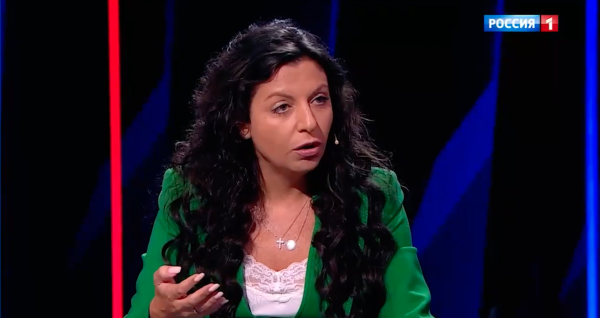After almost three years of bargaining, Belarus’ autocratic leader Aliaksandr Lukashenka and Russia’s President Vladimir Putin have listed 28 economic areas for deeper integration between the two countries. The Union Programs (a new, less ambitious, name for what had been known as Roadmaps for Integration) are, however, vague, declarative, and lack detail. Implementation will be lengthy and full of potential pitfalls.
Lukashenka has succeeded in fending off, for now, a closer political union with Russia. He has also seemingly persuaded Putin to drop constitutional reform from the agenda, which the Kremlin arguably hoped would enhance its influence in Belarus. On the military side, however, Lukashenka’s resistance appears to be buckling.
The published short synopsis of economic integration is a list of directions for harmonization and unification of regulations and policies in such areas as taxation, customs, audit, information security in financial markets and energy, as well as macroeconomic, monetary, agrarian, and transportation policies. The programs would need to be clarified through the adoption of additional legislation. For example, the program on Harmonization of Monetary Policy presupposes that the central banks will agree on principles and mechanisms by December 2022. Yet it does not state what they will be.
Similarly, the program on a Single Gas Market stipulates that by December 1, 2023, the two countries will sign an addendum specifying how this market should be regulated. Although Putin pledged to keep the gas price for Belarus low ($128.50 per cubic meter) for the next two years — which is critical for Belarus’ heavily subsidized industry — there is no indication that Belarus would secure gas imports at Russian domestic prices (around $60) that Lukashenka has long sought.
In short, although Belarus and Russia have set a framework for a deeper economic cooperation, they have not solved the most contentious issues. Contradictions remain, bargaining will continue and this is unlikely being resolved soon. Lukashenka admitted that “not all knots have been untied,” probably in part because he remains unwilling to surrender administrative command over the Belarusian economy.
Experience in Ukraine might have encouraged the Kremlin to practice strategic patience, rather than try and break the will of an uncompliant negotiator. Given the shaky economy, deepening integration may be just a matter of time, and Russia has more of that than Lukashenka. By establishing institutional mechanisms — starting with economic deals, which could also allow it access to Belarus’ lucrative state-owned assets (through joint holding companies and similar tactics) — Russia aims to keep Belarus firmly in its orbit, regardless of who will be its next political leader.
Lukashenka is — as usual — seeking to buy time against the demands of an ardent Russia. This proved an effective strategy in the past, when dramatic external events (e.g. the Russia-Georgia war in 2008 and the annexation of Crimea in 2014) helped him successfully play the West and Russia against each other. For now, he has managed to persuade Russia to do away with the infamous 31st union program, which envisaged supranational bodies, a single currency, and a common defense policy.
Yet the events of the past year, driven by the loss of legitimacy after last year’s stolen election, have shrunk Lukashenka’s freedom to block the integration process. The pressure from Russia will only grow. As Putin noted: “We believe that first of all we have to deal with the economy, and then in a natural way everything else will require additional regulation, including perhaps at the level of the Union Parliament — I do not rule out that it might be created.”
Russia can now calibrate its economic support to make Lukashenka fulfill his obligations. The latter wants regular and large (at least $3bn) cash injections from the Kremlin to stave off disaster for Belarus’ inefficient and increasingly sanctions-battered economy (the latest estimate forecasts a 6% loss in GDP in the first two to three quarters after the sanctions de facto enter into force and up to 10% cumulatively later.) But Putin is keeping Belarus on a short leash, pledging only a $600m loan until the end of 2022 and including restrictions to ensure Belarus cannot use it for the construction of the Astravets nuclear power plant. Likewise, Belarus is not receiving any compensation for Russia’s domestic tax reform in the oil sector, which it is estimated will cost it $10bn from 2019-2024. Compensation was promised in 2018, but only if it embarked on fully-fledged integration with Russia.
Most significant perhaps, the Kremlin is significantly advancing its military interests in Belarus. Despite the fact that none of the agreed union programs mentions the subject specifically, an eye-catching three and a half hours of the eight-hour-long meeting between Putin and Lukashenka on September 10 were reportedly devoted to military matters. The two countries already share air defense infrastructure, have jointly assigned units in Belarus’ western military district and regularly conduct joint military drills (as with this month’s huge Zapad-21 exercises.)
Recently, the two countries set up a joint Military Training Center for Air Defense in western Belarus. This included the deployment of advanced Russian S-400 anti-aircraft missile systems and Sukhoi SU-30SM multirole fighter aircraft under Russian command. Not so long ago, Lukashenka suggested he would not host a Russian military base in Belarus. To some, the new Center looks very much like he has given way on this issue.
Both authoritarian leaders are tough negotiators. But they are also both dependent on each other in supporting increasingly dictatorial domestic policies. Lukashenka’s grim record — brutal oppression of opponents at home, hijacking an airplane with a dissident journalist on board, attempting to kidnap an athlete critical of the authorities from the Olympics, or creating a refugee crisis on the EU border — is fully approved by the Kremlin. Putin’s main concern is to guard against Belarus’s political crisis spilling over to Russia. Meanwhile, he will continue to exploit Lukashenka’s weakness to advance Russia’s irredentist ambitions. It is a long path, but the two countries have already traveled a considerable way.




